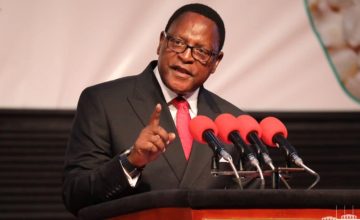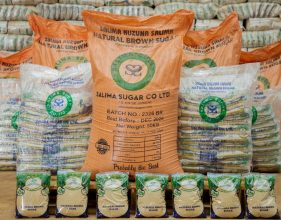Mera also in revenue lies
 The late Bingu wa Mutharika administration’s revenue embellishment scheme went further than bulldozing the Malawi Revenue Authority (MRA) to borrow ‘taxes’ from local banks.
The late Bingu wa Mutharika administration’s revenue embellishment scheme went further than bulldozing the Malawi Revenue Authority (MRA) to borrow ‘taxes’ from local banks.
Investigations reveal that the revenue cover-up spread its wings from tax-revenue to non-tax revenue in the fuel industry where Treasury was ‘borrowing’ levies to fill up pot-holes occasioned by the zero-deficit budget (ZDB).
Specifically, the administration used to directly divert revenue, some of which could have helped to keep fuel prices low, from the Malawi Energy Regulatory Authority (Mera).
Official correspondence, documents as well as interviews with informants show how fuel levies, most of which were supposed to go directly to beneficiary institutions from Mera, were diverted into the Malawi Government Account Number One, which is irregular.
The evidence also indicates that as early as June 2009, the Ministry of Finance was borrowing from public agencies and declaring the money as revenue.
Insiders claim that around November 15 2009, Treasury called Mera’s director of finance and administration, Elias Hausi, and instructed him to remit K2 billion [about $8 million] from the Price Stabilisation Fund (PSF) to the Government Account Number One.
“This was done verbally as there is no document that shows the instruction. The PSF is used to cushion the pump prices against shocks on the world oil market,” an official said. But Hausi has not been available for comment despite telephone efforts to reach him and physical visits to his office.
As at December 1 2009, Mera’s Price Stabilisation Call Account (whose details we have) had an accumulated balance of K4 283 121 425. 77 (about $17.1 million).
Two days later, K2 billion left the account after Treasury’s reported verbal instruction.
In a letter dated November 19 2009, signed by the then Mera acting chief executive officer Welton Saiwa, Hausi and former Petroleum Importers Limited (PIL) general manager Robert Mdeza, the trio asked a bank to transfer the K2 billion.
Reads part of the letter: “We write to request you to transfer a sum amounting to two billion Malawi kwacha from Mera Price Stabilisation Fund call account…to the following Malawi Government account: account name Malawi Government Account Number One, [at] Reserve Bank of Malawi.â€
The PSF call account indicates that on December 2 2009, the K2 billion was transferred from the account to the main government account at the RBM, leaving a balance of K2 283 115 925.77.
That money, which was not clearly indicated whether it was a loan or not, has not been repaid. This was a costly move that forced fuel prices to rise in January 2010 because there was no money to cushion a fuel hike.
Sources claimed the PSF accumulated at least K4.6 billion by early November 2009, but the global oil market started experiencing instability and this required PIL to claim from PSF losses incurred on fuel imports.
With the K2 billion transferred into the main government account, the balance was not enough to meet importers’ loss claims, according to the sources
Said a source: “The PSF was completely wiped out by January 2010, which necessitated the fuel price increase. Had government not borrowed the money, or had it repaid, Malawians, who already contributed the K4.6 billion through the pump, could have saved their incomes for another two months.â€
The sources claim the revenue cover-up was so wide that Treasury extensively borrowed from public institutions, including part of revenue declared as collected by MRA by December 31 2011.
“Treasury…would ask Mera to deposit all levies meant to go to institutions such as the Road Fund Administration, MBS [the Malawi Bureau of Standards], PSF, the Rural Electrification Fund to Government Account Number One. This money is supposed to go to the institutions when collected by Mera,” said another official.
A government official (name withheld), who worked at the Ministry of Finance (MoF) at the time of the transactions, alleged the culture of spicing up figures is common at Treasury, especially in June and December, which respectively mark financial half-year and annual periods, in anticipation of IMF visits.
On his part, responding to our questionnaire, Roads Fund Administration chief executive officer Hennox Mazengera said Mera in December 2010 paid out K362,485,786.80 (about $1.4 million) and K388 766 426.40 (about $1.6 million)on 6 and 22 December 2010, respectively.
“RFA started facing problems to fulfil its obligation to pay contractors on time from March 2011. This was at a time that Mera’s remittances of the Road Fund Levy had become intermittent. As we were made to understand, this was mainly due to difficulties which were being faced by petroleum importing companies to remit levies to Mera at a time that the Price Stabilisation Fund (PSF) had become insufficient to fully compensate them for the losses they were making on the importation of fuel,” said Mazengera.
On the roads levies that were sent to Treasury, Mazengera said his organisation never received any communication or information that anybody wanted to borrow or use roads levy for any purpose.
Said Mazengera: “The principles on which the RFA was created require that all funds due to the Roads Fund should go directly to a designated account of the RFA and used for specific predetermined purposes. Therefore, it was incongruous to deposit road fund levy proceeds in any account [as implied in your question] other than the designated account.â€
University of Malawi’s Chancellor College economics professor Ben Kalua described the transactions “a big lie”, saying the exercise distorted everything that was presented to Malawians as revenue throughout the whole period.
Said Kalua: “It is definitely a lie. Non-tax revenues that are earmarked for something are supposed to go directly to what they are earmarked for. If the budget presented indicates something has to go somewhere and that revenue goes a different direction, there would be a serious impact on whatever was planned for the country.â€
Mera chief executive officer Dr. Alex Chiwaya and Hausi did not answer their mobile phones during the period of this investigation while Mera public relations officer Edward Mponda said he was on leave, but asked for questionnaire which we did, with two follow-up reminders. But this yielded nothing.
Former Secretary to the Treasury Joseph Mwanamvekha, who was controlling officer at the time, was also not available for comment. A physical trip to his house in Blantyre also yielded nothing.
The Mera twist and role come after Finance Minister Ken Lipenga recently confirmed that MRA borrowed billions of kwacha to patch up government revenue for its ZDB. All this was recorded in government books as tax income to paint a rosy picture of the budget.
The MRA scam was first brought to light in February this year by Malawi Forum for Unity and Development (Mafunde) president George Nnensa who claimed in Parliament he had evidence MRA borrowed the money from National Bank of Malawi, NBS Bank, Standard Bank, Indebank and the Malawi Savings Bank at the end of December 2011.
In March this year, Lipenga, under pressure to resign from his post following the scandal, described Nnensa’s assertions as a “fabrication”, only to confirm a few weeks ago that there was some truth in claims that MRA borrowed about K15 billion from commercial banks to portray that it had surpassed its revenue target.
A few weeks ago, The Nation also revealed that MRA management defended itself before the board, saying the instruction to borrow came from Treasury. MRA said it was not responsible for announcing revenue figures to Parliament, but the Ministry of Finance.
But in a briefing to his board, MRA CEO Lloyd Muhara is on record to have said that such transactions, dubbed ‘special operations’, “have been practised from long time ago in the history of the country.â€





